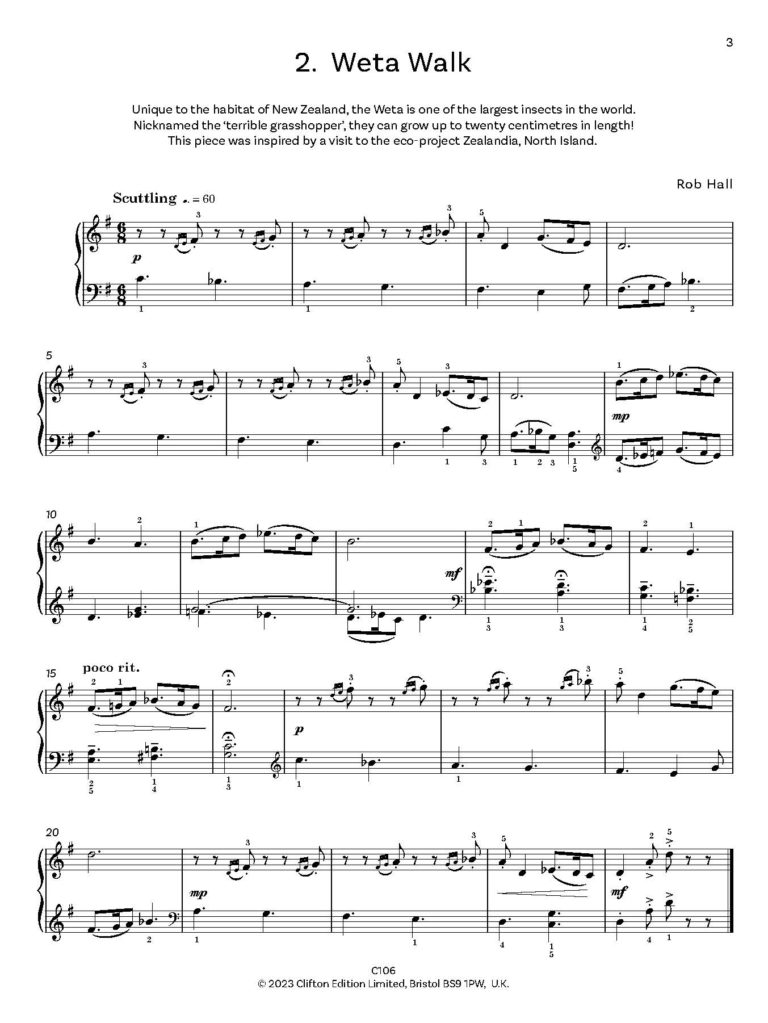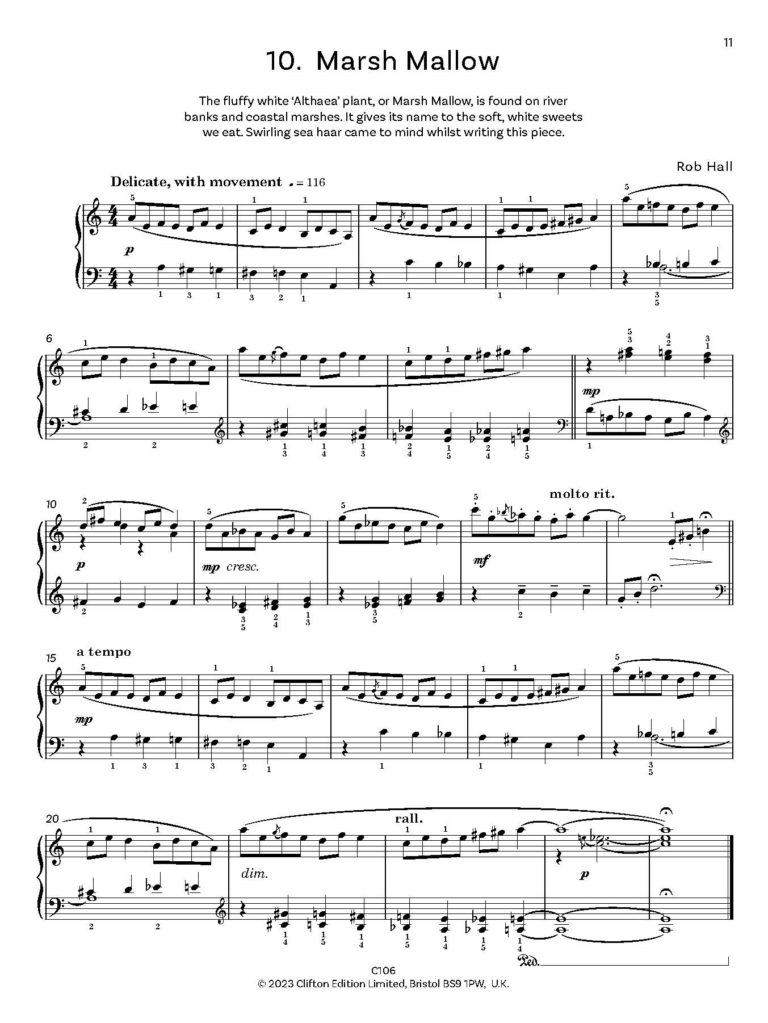Through twelve colourful originals and six refreshing new arrangements of classic folk songs from around the globe, it’s not only music you’ll learn along the way, but a host of insights and facts around the inspiration for each piece.
With origins and ideas from New Zealand to New Orleans, Finland to France – including a five-part Nordic Scenes suite thread through the programme – there is truly something for all improving players in this wide-ranging, progressive piano collection with its enticing repertoire and new techniques to explore. Series: Escapes for Piano
Contents
1. Number Cruncher
Learn all the intervals from unison up to an octave in one short piece!
2. Weta Walk
Unique to the habitat of New Zealand, the Weta is one of the largest insects in the world, growing up to twenty centimetres in length.
3. Island Hop [Nordic Scenes]
Nordic countries such as Sweden and Finland have tens of thousands of islands between them. Ferries and bridges allow tourists to ‘hop’ between them.
4. Were You There? [Trad. American]
Dating back to the 19th century, ‘Were You There?’ is significant as the first spiritual to be included in any major American hymn book.
5. Tundra [Nordic Scenes]
Tundra is a term used to describe the treeless plains of northern countries including permanently frozen ground, or permafrost, within the Arctic circle.
6. The Nightingales [Trad. Judeo-Spanish]
Los Bilbilicos is a beautiful folk song from the Jewish Sephardic community with origins of medieval Spain and influences of Turkish and Greek music.
7. Round The Mulberry Bush [Trad. English]
This arrangement of the old English rhyme ‘Here We Go Round The Mulberry Bush’ was written on a ‘cold and frosty morning’ in January!
8. Spinning Plates
A stylised, contrapuntal piece in natural minor which provides a useful workout for the fingers and promotes independence of each hand.
9. Noël Nouvelet [Trad. French]
Noël Nouvelet translates as ‘Sing we now of Christmas’ and comes from the French renaissance. It’s Dorian mode tonality lends a folk song quality.
10. Marsh Mallow
The fluffy white Althaea plant, or Marsh Mallow, is found on river banks and coastal marshes. It gives its name to the soft sweets we eat.
11. She Moved Through The Fair [Trad. Irish]
An ancient, haunting melody from Ireland with an unresolved theme of a wedding that never came to pass.
12. Bothy Boots [Nordic Scenes]
A ‘bothy’ is a basic shelter found in remote parts of northern Britain often used by hill walkers.
13. Mardi Gras March
Fat Tuesday (or Shrove Tuesday) is most famously celebrated in the French Quarter of New Orleans with a colourful two week festival with parades and marching bands.
14. Frugby
A game of rugby played by frogs! There are some slimy scrums, some hopping up and down the pitch, and a triumphant conversion to finish.
15. Mirror Fjord [Nordic Scenes]
The western coast of Norway is numerously indented with long, narrow tongues of water, know as fjords. Windless conditions can offer perfect reflections of the surrounding mountains.
16. Bill’s Bounce
Dedicated to the memory of Scots drummer and jazz promoter Bill Kyle. The title alludes to Charlie Parker’s blues ‘Billie’s Bounce’.
17. Ae Fond Kiss [Trad. Scottish]
Scottish poet Robert Burns’s best known love song appears in one of many letters he wrote to Agnes Maclehose, an Edinburgh widow.
18. The Devil’s Dance Floor [Nordic Scenes]
The notoriously choppy waters of the Pentland Firth off the north coast of Scotland are known locally as The Devil’s Dance Floor.
YouTube Video
The Trad. Irish song She Moved Through The Fair played by the arranger Rob Hall.
YouTube Video
Ae Fond Kiss played by Chick Lyall.


